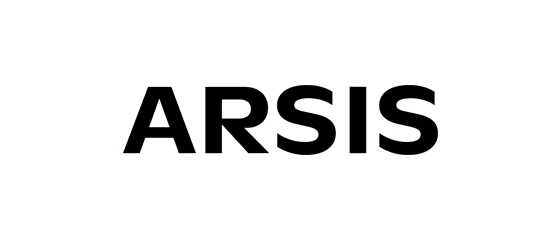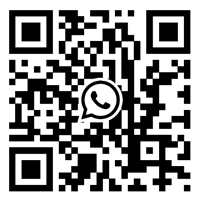Contents
-
How To Determine A Colored Gemstone’s Quality And Grading: Color, Cut, Carat, Clarity
-
What is a Gemstone Carat?
-
How are Gemstone Colors Graded?
-
What does Gemstone Clarity “Type” Mean?
-
Gemstone Cut
-
Learn More About Your Birthstone or Favorite Gemstone:
-
Other Gemstones of Note:
How To Determine A Colored Gemstone’s Quality And Grading: Color, Cut, Carat, Clarity
The most common reason people shop for gemstones is to purchase or design fine birthstone jewelry. Ranging in colors, durability, and rareness, nature does not make different types of gemstones equally. For example, pearls are made organically in oysters and amber is in fact fossilized tree resin. While most gemstones come from the earth, there are scientific factors that make stones different from one another, as well as how they are graded among their own kind. The chemical composition and molecular structure of gemstones will determine not only the type of gemstone, but the color as well.
What does this mean?
Take a sapphire, for example. Most people immediately associate it with blue. However, this gemstone comes has a rainbow of color possibilities. Although unusual, a pink sapphire is still a sapphire. With other factors to consider, two sapphires at the same carat weight can have very different price tags.
It takes gemologist, a gemstone expert, to determine the grades of different stones. Generally, all gemstones are graded and appraised using the same chart.
What is a Gemstone Carat?
Carats are the unit for measuring gem weight. One carat equals 1/5 of a gram (200 milligrams). A common misconception is that carat indicates the size of a gemstone. The different chemical compositions of gemstones will cause some to be denser and heavier than others. The cost of a 1ct ruby will be different from the cost of a 1ct tanzanite.
When it comes to cost, the general rule of thumb is that the larger the carat, the bigger the price tag. Keep in mind that size isn’t everything when shopping for gemstones. A smaller gemstone with a higher color, clarity, and cut grade can cost more than a large but flawed stone.
How are Gemstone Colors Graded?
Although diamonds are a gemstone, they have a grading system separate from other gemstones (see April: Diamond below). Generally speaking, a gemstone that is expected to be a certain color is graded on its saturation and vividness of that color. For example, a tanzanite at its highest color grade will be a deep, rich purple. A tanzanite stone that is a lesser grade will be a very pale, pastel purple.
What does Gemstone Clarity “Type” Mean?
Like diamonds, clarity in gemstones refers to the inclusions (or flaws) in a gemstone. These range from very few if any inclusions that are extremely difficult to see with a magnifier, to several inclusions and/or easy to see with the naked eye. It is important to know that the intensity of the color will matter more than the inclusions (the clarity) in gemstones, whereas with diamonds clarity is very important. Although it is a lesser role, clarity does affect the quality of a colored gemstone.
The GIA has developed a system to help people understand gemstone clarity grading:
- VVS: Very, Very Slightly Included Minute. Inclusions are difficult to see even with 10x magnification.
- VS: Very Slightly Included Minor. Inclusions can be seen with 10x magnification but are still invisible to the naked eye.
- SI1: Slightly Included 1. Inclusions are easily seen with 10x magnification and can be noticeable to the naked eye.
- SI2: Slightly Included 2. Inclusions are easily seen with a 10x magnification and are visible with the naked eye.
- I1: Included 1. Inclusions are obvious and have a negative effect on the overall appearance or beauty of the gemstone.
- I2: Included 2. Inclusions are very obvious and have a strong negative effect on both the appearance and durability of the stone.
To make things easier, the GIA has categorized colored gemstones into one of three categorized “Types” for average clarity on the market:
Type 1 Gemstones
These gemstones are typically found inclusion free on the market. These are also called “eye clean” stones because no inclusions are visible to the naked eye.
Some Type 1 gemstones include:- Aquamarine
- Morganite
- Blue Topaz
- Tanzanite
Type 2 Gemstones
Type 2 gemstones are usually found with some inclusions. However, the inclusions of high quality Type 2 gemstones will be all but invisible to the naked eye.
Some Type 2 gemstones include:- Spinel
- Garnet
- Peridot
- Amethyst
Type 3 Gemstones
Type 3 gemstones will almost always be found with inclusions, several of which may be seen by the naked eye. Don’t let this fact fool you, emeralds are in this category and is among the top 5 most precious gemstones along with diamond, ruby, sapphire and spinel.
Some Type 3 gemstones include:- Emerald
- Red Beryl
- Kyanite
- Prehnite
Gemstone Cut
While cut does indicate the shape of a gemstone, the shape is actually not the important part. When a gemstone is cut, it is graded on the cut’s ability to showcase and maximize both the natural color and light reflective properties of the stone. The better the cut does its job, the better the grading.
Bringing It All Together: Colored Gemstone Grading.
Colored gemstones are given a letter grade based on their quality. Generally, the all stones are graded on a scale of A-D.
Colored Gemstone Grading A
- Color is as expected.
- Color saturation is rich and even throughout the stone.
- Few if any inclusions and are difficult to see with the naked eye.
- Cutting is uniform and high in luster.
- There are neither cracks nor chips.
Colored Gemstone Grading B
- Color is expected, but not as vivid as an A Grade stone.
- Color saturation is rich and fairly even.
- Tone of the color may be slightly light or dark.
- Few & small inclusions.
- Cut may have a lesser luster.
- Few chips or cracks may be in the cut.
Colored Gemstone Grading C
- Color of the stone is expected.
- Color is not vivid or even.
- Color is significantly lighter or darker.
- Inclusions visible to the naked eye.
- Cut has medium to low luster.
- Cracks and chips are apparent.
Colored Gemstone Grading D
- Color is generally to be expected.
- Color saturation is very low and very uneven.
- Color can be so dark it is almost black or so light that it is almost colorless.
- Inclusions are apparent and drastically affect the appearance and durability of the stone.
- The stone may even appear to be opaque.
- Cutting or shape of the stone is irregular.
- The surface luster is poor.
- Cracks and chips may be apparent.
Learn More About Your Birthstone or Favorite Gemstone:
- January: Garnet
- February: Amethyst
- March: Aquamarine
- April: Diamond (Note: Whether it’s a birthstone necklace or an engagement ring, it’s important to know how to shop quality diamonds.)
- May: Emerald
- June: Pearl
- July: Ruby
- August: Peridot
- September: Sapphire
- October: Opal
- November: Citrine
- December: Zircon
Other Gemstones of Note:
- Black Opals
- Topaz
- Tanzanite
- Amber
- Beryl
- Turquoise















